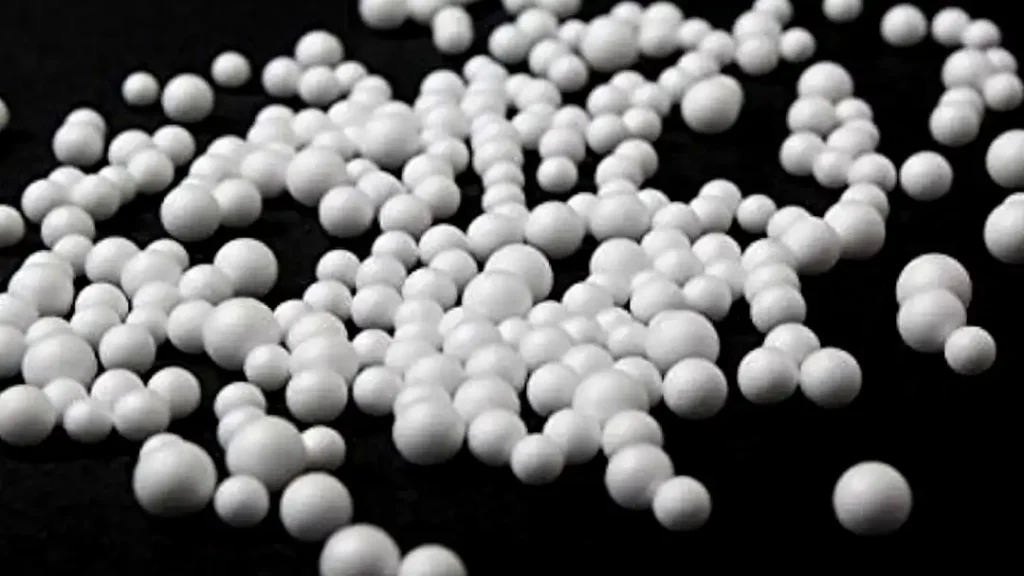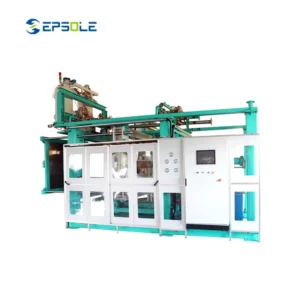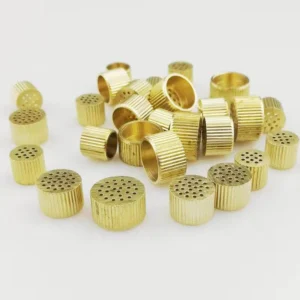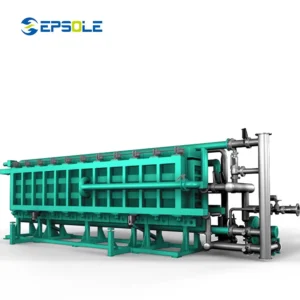Expandable Polystyrene (EPS) granules are among the most versatile materials available today. With applications spanning a wide array of industries, EPS granules are renowned for their lightweight nature, excellent thermal insulation properties, and ease of molding into various shapes.
This blog post delves into the myriad uses of EPS granules, illustrating how they have become indispensable in sectors ranging from packaging and construction to arts and crafts.
What Are Expandable Polystyrene Granules

EPS granules are tiny expandable polystyrene beads made from polystyrene, a type of thermoplastic polymer. The manufacturing process involves mixing polystyrene resin with a blowing agent, such as pentane. This mixture is then heated, causing the beads to expand significantly in size due to the vaporization of the blowing agent.
The resulting expanded beads are lightweight, rigid, and possess excellent insulating properties. They can be further processed into various forms, including blocks, sheets, and molded shapes, making them incredibly versatile.
Expandable Polystyrene Granules vs Beads

Expandable Polystyrene (EPS) is a versatile material commonly used in various industries for insulation, packaging, and cushioning. EPS is available in different forms, including granules and beads. Here’s a detailed comparison between EPS granules and beads:
1. Definition and Composition
- Granules: EPS granules are small, raw, unexpanded particles of polystyrene. They are typically used in the production process before they are expanded.
- Beads: EPS beads, also known as pre-expanded beads, are the expanded form of EPS granules. These beads have undergone a pre-expansion process, where they are heated and expanded to many times their original size.
2. Production Process
Granules:
- Initial State: Small, solid particles.
- Expansion: Requires expansion through a process involving steam and heat.
- Usage: Used as a raw material for further processing.
Beads:
- Pre-Expanded State: Already expanded, lightweight, and contain a significant volume of air.
- Direct Use: Ready for immediate use in molding, insulation, and packaging applications.
3. Applications
Granules:
- Manufacturing: Used as the starting material in the production of EPS blocks, sheets, and molded products.
- Controlled Expansion: Allows for controlled expansion to achieve specific densities and sizes for various applications.
Beads:
- Packaging: Used directly in packaging materials, protective cushioning, and void fill.
- Insulation: Utilized in loose-fill insulation for walls, roofs, and cavity fills.
- Crafts and Hobbies: Popular in arts, crafts, and bean bag fillings due to their lightweight and shock-absorbing properties.
4. Properties
Granules:
- Density: Higher density as they are in the raw, unexpanded form.
- Storage and Transport: Easier to store and transport in large quantities due to their compact size.
Beads:
- Density: Lower density as they are expanded and contain air.
- Volume: Larger volume per unit weight, making them bulkier.
- Insulation: Better insulation properties due to trapped air pockets.
Expandable Polystyrene Granule Uses

What are polystyrene granules used for?
1. Packaging
One of the most common uses of EPS granules is in packaging. Due to their shock-absorbing properties, EPS products are ideal for protecting delicate items during transportation. Here’s how EPS granules are used in the packaging industry:
- Protective Packaging: EPS is often molded into shapes that snugly fit around products, providing cushioning and reducing the risk of damage. This is particularly important for electronic goods, appliances, and fragile items such as glassware and ceramics.
- Void Fill: Loose EPS beads or ‘packing peanuts’ are used to fill empty spaces in shipping boxes, ensuring that items do not shift during transit. This helps prevent damage caused by movement within the package.
- Food Packaging: EPS is also used to manufacture containers and trays for food products. Its insulating properties help maintain the temperature of hot or cold food items, making it a popular choice for take-out containers and disposable coolers.
2. Construction
EPS granules have significant applications in the construction industry, primarily due to their insulating properties and structural capabilities. They contribute to energy efficiency and building integrity in several ways:
- Insulation Boards: EPS is widely used to produce insulation boards for walls, roofs, and floors. These boards help regulate indoor temperatures by minimizing heat transfer, thereby reducing energy consumption and improving overall energy efficiency.
- Insulated Concrete Forms (ICFs): EPS is used to create forms for pouring concrete. These forms remain in place after the concrete has set, providing continuous insulation and enhancing the structural strength of buildings.
- Geofoam: EPS blocks, known as geofoam, are used in construction projects to provide lightweight fill material. This is particularly useful in road construction, landscaping, and retaining wall projects where heavy fill materials are not suitable.
3. Automotive Industry
The automotive industry leverages the lightweight and energy-absorbing properties of EPS granules in several applications:
- Impact Protection: EPS is used in car bumpers and side panels to absorb impact energy during collisions, enhancing passenger safety.
- Seating: EPS is used in car seats to provide cushioning and support while also reducing the overall weight of the vehicle, which can improve fuel efficiency.
4. Marine Applications
EPS granules are utilized in marine applications due to their buoyancy and resistance to water absorption:
- Buoys and Floats: EPS is used to manufacture buoys and floats for maritime navigation and fishing equipment. Its buoyant nature ensures that these devices remain afloat even in rough water conditions.
- Dock Systems: Floating docks and pontoons often incorporate EPS cores to provide buoyancy and stability.
5. Arts and Crafts
The lightweight and moldable nature of EPS granules make them a favorite in the arts and crafts community:
- Model Making: Artists and hobbyists use EPS to create detailed models and prototypes. The material can be easily cut, shaped, and painted, making it ideal for custom projects.
- Decorative Items: EPS is used to create decorative items such as ornaments, stage props, and floral arrangements. Its versatility allows for intricate designs and a variety of finishes.
6. Medical Applications
EPS granules also find applications in the medical field, particularly in the following areas:
- Medical Coolers: EPS coolers are used to transport temperature-sensitive medical supplies, such as vaccines and biological samples, ensuring they remain at the required temperature during transit.
- Prosthetics and Orthotics: EPS is used in the manufacturing of prosthetic limbs and orthotic devices. Its lightweight nature ensures comfort and ease of use for patients.
7. Retail and Consumer Products
EPS granules are used in a variety of consumer products, including:
- Toys: Many toys, especially educational and construction toys, incorporate EPS due to its safety and ease of molding.
- Sports Equipment: EPS is used in the production of helmets, padding, and other protective gear, taking advantage of its impact-absorbing properties.
How to Mould Expandable Polystyrene Granule
Molding expandable polystyrene (EPS) granules is a relatively straightforward process that involves heating the granules to their melting point and then shaping them into the desired form. Here’s a step-by-step guide on how to mold EPS granules:
1. Equipment and Materials
- EPS granules
- Molding equipment (e.g., molds, forms, or shaping tools)
- Heating source (e.g., steam or hot air)
- Ventilation system (to remove any fumes or gases generated during the molding process)
- Safety equipment (such as gloves and goggles)
2. Preparing the Mold
Ensure that the mold or shaping tool is clean and free from any debris or contaminants. If necessary, apply a mold release agent to prevent the molded EPS from sticking to the mold surface.
3. Heating the EPS Granules
Place the EPS granules into the molding equipment or heating chamber. Apply heat gradually using a steam or hot air source. The temperature required to melt EPS typically ranges from 80°C to 110°C (176°F to 230°F), depending on the specific type of EPS and the desired molding properties.
4. Shaping the EPS
Once the EPS granules reach their melting point and become pliable, use the molding equipment to shape them into the desired form. This can be done by applying pressure to the granules within the mold or using shaping tools to sculpt the material into the desired shape.
5. Cooling and Solidification
Allow the molded EPS to cool and solidify within the mold. The cooling process can be accelerated by using cooling fans or water-cooled molds. Once the EPS has solidified, it will retain its shape and structural integrity.
6. Demolding
Carefully remove the molded EPS from the mold or shaping tool. If necessary, use gentle tapping or vibration to release the EPS from the mold surface without causing damage to the finished product.
7. Finishing Touches (Optional)
After demolding, you may choose to trim or finish the molded EPS to achieve the desired appearance or dimensions. This can be done using cutting tools or abrasive methods to remove any excess material or rough edges.
8. Quality Control
Inspect the molded EPS for any defects or irregularities, such as air bubbles, voids, or surface imperfections. Address any issues as needed to ensure the final product meets quality standards.
9. Storage and Handling
Store the molded EPS in a dry and well-ventilated area to prevent moisture absorption and minimize the risk of mold growth. Handle the finished products with care to avoid damage or deformation.
Safety Considerations
- Always follow proper safety precautions when working with hot equipment and molten materials. Wear appropriate protective gear, such as gloves and goggles, to prevent burns or injuries.
- Ensure adequate ventilation to remove any fumes or gases generated during the heating and molding process.
- Be mindful of the potential fire hazards associated with working with hot equipment and EPS materials. Keep fire extinguishing equipment nearby and follow fire safety protocols.
By following these steps and safety guidelines, you can effectively mold expandable polystyrene (EPS) granules to create a wide range of products for various applications, including packaging, insulation, and construction.
Expandable Polystyrene Granule Recycling

EPS granule recycling involves collecting used EPS products, such as packaging materials and insulation boards, and processing them into reusable granules.
These granules can then be incorporated into the manufacturing of new EPS products, closing the loop on the material’s lifecycle and reducing the need for virgin materials.
Importance of EPS Granule Recycling
- Environmental Conservation: Recycling EPS granules reduces the amount of waste sent to landfills, alleviating pressure on landfill capacity and mitigating environmental pollution.
- Resource Conservation: By recycling EPS granules, we conserve valuable resources, such as petroleum-based plastics, that are used in the production of EPS.
- Energy Savings: Recycling EPS granules requires less energy than producing new materials from scratch, resulting in energy savings and a reduced carbon footprint.
- Economic Benefits: Recycling EPS granules can create economic opportunities, including jobs in collection, processing, and manufacturing, while also providing a steady supply of raw materials for industries that rely on EPS.
The EPS Granule Recycling Process
- Collection: Used EPS products are collected from various sources, including households, businesses, and industries. These products may include packaging materials, insulation boards, and construction materials.
- Sorting and Cleaning: Collected EPS products are sorted and cleaned to remove contaminants such as dirt, debris, and adhesives. This ensures that the recycled material meets quality standards and can be processed effectively.
- Compaction or Shredding: EPS products are compacted or shredded into smaller pieces to reduce their volume and facilitate transportation. This step may involve the use of specialized equipment, such as EPS densifiers or shredders.
- Melting and Extrusion: The compacted or shredded EPS material is then melted down and extruded into long strands, which are cooled and cut into small granules. These granules are now ready to be used as raw material in the manufacturing of new EPS products.
Related: EPS Foam Recycling: Unlocking Sustainable Solutions for a Greener Future
Innovations in EPS Granule Recycling
- Chemical Recycling: Chemical recycling processes break down EPS into its chemical components, which can then be used to produce new polystyrene materials. This approach offers a more efficient way to recycle EPS, especially contaminated or difficult-to-recycle products.
- Closed-Loop Systems: Some manufacturers are implementing closed-loop recycling systems, where EPS waste generated during production is collected, recycled, and reused within the same facility. This minimizes waste and maximizes resource efficiency.
- Biodegradable Alternatives: Research and development efforts are underway to develop biodegradable alternatives to EPS that offer similar performance characteristics while being more environmentally friendly. These alternatives could help reduce the reliance on traditional EPS materials and facilitate easier recycling.
Conclusion
Expandable Polystyrene (EPS) granules are an incredibly versatile material with applications spanning numerous industries. From protecting delicate items during shipping to insulating buildings and providing buoyancy in marine applications, EPS granules play a crucial role in modern life. As we continue to innovate and develop more sustainable practices, EPS will likely remain a valuable material, balancing functionality and environmental considerations.
Understanding the diverse uses of EPS granules highlights the importance of this material in our daily lives and underscores the need for responsible use and disposal to minimize environmental impact. Whether in packaging, construction, automotive, or artistic applications, EPS granules provide solutions that enhance efficiency, safety, and creativity.


-1-300x300.webp)


